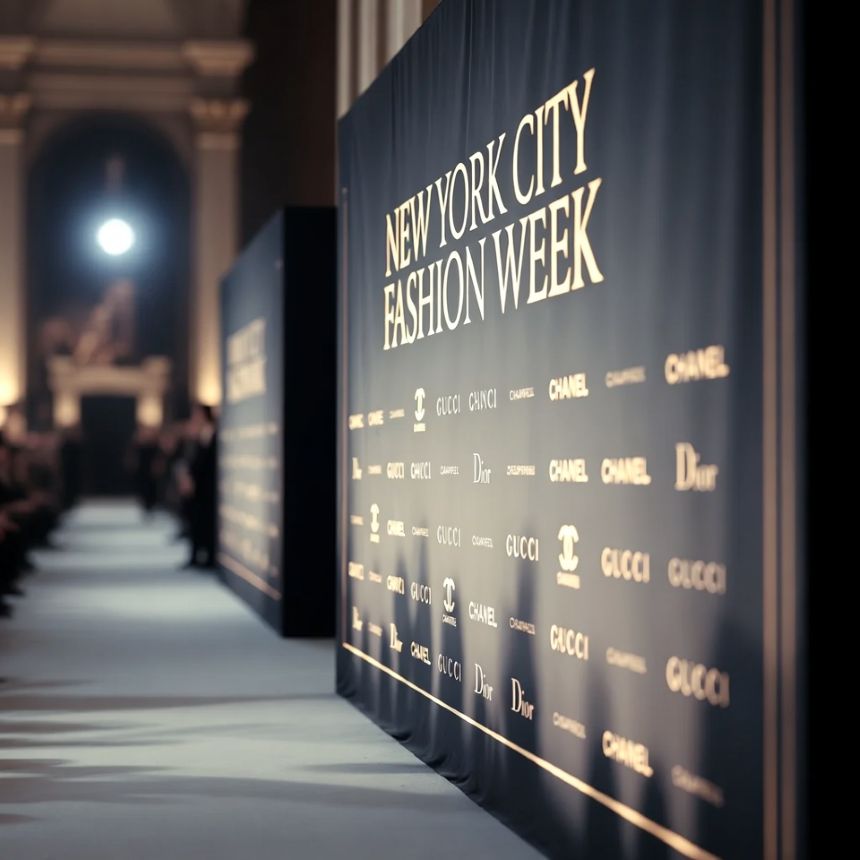
Step and repeat banners have become essential tools for showcasing brand identity at fashion events, showroom launches, and runway spaces in New York City. These banners transform ordinary backdrops into visual statements that communicate a brand’s style and values. The careful design of each element, from materials and finishes to pattern repeats and typography, can make a lasting impression on attendees and photographers alike.
Choosing the right step and repeat banner provider in New York (reference: step and repeat New York) ensures that your banner reflects your brand’s design language accurately. This includes selecting high-quality vinyl or fabric, finishes that catch light elegantly, and a repeat pattern that balances logos with negative space. Every decision shapes how the brand is perceived, whether during a high-profile runway or an intimate showroom unveiling.
Material Matters
Materials set the tone for the entire display. Vinyl banners offer durability and a glossy finish, making logos pop under event lighting. Fabric banners, on the other hand, provide a softer texture and can reduce glare, ideal for photography-heavy environments. The choice of material should align with the brand’s overall aesthetic. Luxury brands often opt for heavier fabrics with matte finishes, while streetwear labels might use lightweight, vibrant vinyl that stands out in crowded venues.
Finish and Texture
The finish of a banner can elevate its visual impact. Matte finishes provide a subtle elegance, while glossy coatings can make logos and images appear more dynamic. Some brands incorporate textured materials to reflect tactile qualities associated with their products, such as embossed lettering or satin-like sheens. These choices help reinforce brand messaging without words, letting the design speak for itself.
Pattern Repeats and Logo Placement
Consistent pattern repetition ensures the banner looks professional from every angle. Logos should be spaced evenly to avoid clutter while maintaining visibility in photographs. Designers often experiment with diagonal or staggered layouts to add visual interest while maintaining brand recognition. Proper alignment creates a sense of balance, guiding the viewer’s eye naturally across the banner.
Typography and Signage Integration
Typography must complement the banner’s overall design. Fonts should be clear, legible, and consistent with the brand’s style guide. Minimalist logos often pair well with clean, sans-serif fonts, while more decorative brands may use scripted lettering. Signage integration is another factor. Placing small call-to-action text or social media handles subtly can enhance engagement without distracting from the main branding.
Enhancing Event Spaces
Step and repeat banners do more than serve as backdrops, they transform the atmosphere of an event. They can turn a simple wall into a high-fashion environment that feels curated and intentional. Runway areas benefit from banners that reflect the season’s theme, inspired by current fashion trends in Tokyo, while showroom launches use banners to reinforce product identity. When attendees take photos in front of a banner, the brand’s presence is amplified across social media, extending the event’s reach far beyond its physical location.
Tips for Designers and Event Planners
- Coordinate colors: Ensure banner colors complement the event’s lighting and decor.
- Test visibility: Take trial photographs to ensure logos and text are legible in images.
- Consider scale: Large banners create a stronger visual impact, but smaller banners can provide intimacy.
- Match event themes: Seasonal or themed launches benefit from banners that reflect the collection’s concept.
Conclusion
Every detail of a step and repeat banner communicates a brand’s identity. From material choices and finishes to typography and pattern repeats, these banners embed the brand into the event space itself. Using a trusted provider of step and repeat banners in New York provider ensures that each design element aligns with the brand’s aesthetic, making fashion shows, showroom launches, and high-profile events truly memorable. With careful planning, a simple backdrop can become an iconic part of the brand experience.

